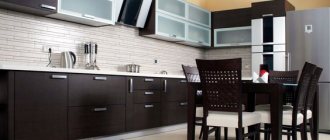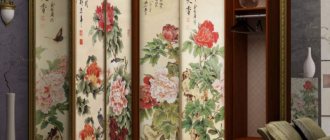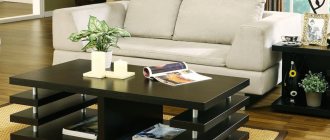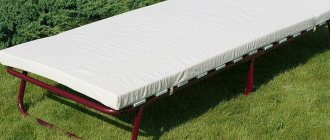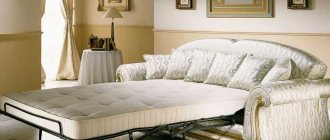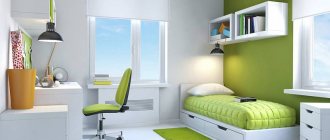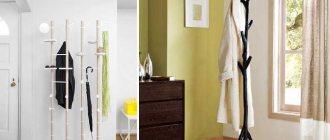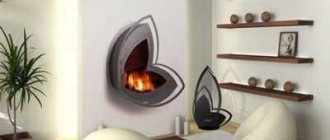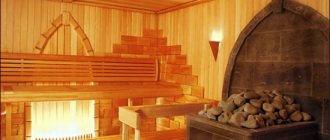- Types of mattresses
- Mattress fillers
- What sizes of mattresses are there?
When buying a new bed, many of us don't think about the mattress at all. But the quality of sleep, well-being in the morning and state of health directly depend on it. Therefore, the selection of a mattress should be given almost the main attention. When considering the types of mattresses for a bed, it has become customary to make a choice in favor of orthopedic models that have anatomical properties - people began to take care of their health.
Choosing an orthopedic mattress is not easy - the large selection of models is confusing. Therefore, in this review, we decided to consider all the most basic types of mattresses and outline their advantages and disadvantages. Attention will also be paid to fillers and sizes.
Types of mattresses
Spring
They differ in design:
- Bonnel dependent block . The spirals are interconnected, so the base is durable and strong. But when one spring is pressed, neighboring elements are compressed. Therefore, spinal support is weak.
- Independent springs Pocket . Each spiral is wrapped in a fabric cover. For different manufacturers, the number of springs varies from 250 to 1000 pcs. per 1 sq. m. The higher the number, the higher the flexibility of the mattress.
Springless
This is a traditional mattress structure. It is thinner than spring. Manufacturers often alternate several layers of different materials to increase elasticity. In addition to the usual cotton wool and foam rubber, agave leaves, banana palm leaves, seaweed, and horse hair are used.
Combined
They involve a combination of several layers of filler from different materials. They differ in hardness and texture, so one side of the product is soft, the other is hard. It is possible to differentiate the left and right parts according to the user's weight (double models).
The soft product may contain sheep wool, latex, foam rubber, or seaweed. To increase rigidity, felt, horsehair or coconut coir are suitable.
Children's
They differ from adults only in size; they correspond to the dimensions of children's cribs. The springless option is safer - metal elements will not accidentally injure the child.
For children's models, 4 types of filler are used:
- Latex
- Polyurethane foam
- Struttofiber
- Coconut coir
All are safe for children's health. The choice of filler depends on the parents’ budget, age and build of the child.
What types of mattress fillers are there?
Mattress filling solves several important problems at once. This is the distribution of loads on the human body, removal of moisture, ensuring air circulation and temperature balance, creating the required degree of rigidity.
A wide variety of fillers seriously complicates the choice. There are time-tested fillers that were used 30-50 years ago. And there are completely new ones, but the average buyer does not know about them. Let's figure it out.
Natural
Manufacturers use various types of fillers of natural and artificial origin. Natural ones have a lot of useful characteristics, and artificial ones attract at an affordable price.
Let's consider the pros and cons of fillers made from natural raw materials.
| Type of filler | Advantages | Minuses |
| Natural latex. Derived from the foamed sap of the rubber tree. | Environmental friendliness; Elasticity; Elasticity; Long-term preservation of the original form; Durability; Refers to anatomical products. | High price. |
| Coconut coir. Derived from coconut fibers. | Elasticity; Reduced rigidity and orthopedicity; Antistatic; Ability to remove moisture. | High price. |
| Cactus coir. Made from the fibers of agave leaves. | Elasticity; Elasticity; Durability; Presence of antistatic properties. | High price. |
| Felt. Made from wool and cotton fibers held together with glue. | Environmental friendliness; Durability; Heat capacity. | It clumps when used for a long time. |
| Horsehair. Made from horse hair (manes and tails), latex impregnated. | Elasticity; Durability; Heat capacity; Providing air microcirculation. | Highly allergenic. |
| Wool (sheep, camel). | Air permeability; Ability to retain heat and wick away moisture. | Highly allergenic. |
| Cotton | Hypoallergenic; Air permeability; Ability to remove moisture. | With prolonged use, it clumps into clumps. |
Artificial fillers
Let's consider artificial fillings for mattresses and sofas.
| Type of filler | Advantages | Minuses |
| Latex is artificial. Made from foamed polymer. | Elasticity; Durability; Elasticity; Long-term preservation of the original form; Low price. | Not eco-friendly material |
| Polyurethane foam. It is a porous polymer. | Elasticity; Moisture resistance; Hypoallergenic; Low price. | Fragility. |
| Memoryform. It is polyurethane foam with memory effect. | Ability to remember and maintain body shape; Hypoallergenic. | High price. |
Combined
In production, several fillers are often used at once to improve performance. The advantages of such products include durability, practicality, and ease of use. Thanks to the combination of different materials, the degree of firmness on each side of the mattress can be adjusted to suit your own preferences.
Combined options are often found in products for children, which is very convenient. Because in the first years of life, the baby should sleep on the hard side of the mattress, and as he grows up, on the soft side.
Characteristics of mattresses
Mattresses are classified depending on their characteristics.
Filler materials
Latex
This is a natural material made from Hevea wood. It is strong, durable, flexible, non-toxic. Recovers quickly after pressing. It is considered an ideal filler, but may cause allergies.
Polyurethane foam (PPU)
Hypoallergenic and practical foam rubber is traditionally used as a layer of mattresses. The processing method is constantly being improved, the material has become safer and more durable than 10 years ago. The service life is much less than latex. Refers to the economy option.
Memory material
This is a type of polyurethane foam that “remembers” the position of the body. The mattress reduces the load on the spine.
Struttofiber
High-quality analogue of foam rubber. A special polyester processing technology helps maintain heat and air circulation for a long time. Quickly restores shape and supports the spine well.
Sheep's wool
Holds heat well, soft structure. But it can cause allergies and requires additional layers of dense materials. Included in the winter/summer double-sided cover. Relieves pain in muscles and spine, stimulates heart function. Blankets and bedspreads made from sheep wool have the same beneficial effect.
Felt
Represents felted sheep's wool. More often used as a layer between springs and the main filler, preserving the surface from abrasion. It is safe, keeps heat, helps distribute the load evenly.
Coconut fiber
Another natural component used to fill mattresses. Coconut coir is durable and safe for health. It does not absorb moisture, so it does not swell at high humidity. Usually the coconut layer is combined with other materials due to its excessive rigidity. Suitable for medical therapy.
Horsehair
The structure of horsehair is strong and elastic. This material does not cause allergies, lasts a long time, and does not absorb water. The stiffness is similar to coconut fiber.
Also in the layer there are seaweed, compressed banana or agave leaves (sisal), felt, camel hair. Used in premium products.
Hardness levels
- Low - inside the products there is foam rubber or a Bonnell spring (economy class) or material with a memory effect. Suitable for thin people.
- Above average - a soft mattress with a durable spring block or a hard top layer of filler (coconut coir or horsehair). Good for teenagers.
- Medium – a combined type, in which one side is hard and the other is soft. In models with a block of independent springs, coconut filler and a medium-density jacquard backing are placed on top. A universal option.
- Below average - implies the presence of a reinforced spring block and a thick layer of solid fillers. Recommended for overweight people and those suffering from chondrosis.
- High – monolithic coconut slab, reinforced springs and elastic stitch. Such products are intended for medicinal purposes.
Maximum load per seat
This indicator is as important as stiffness, especially for larger people. If the model is double, then the weight of each person is taken into account. A standard mattress can withstand a load of 100 kg, harder models - 160 kg, and hard ones - up to 300 kg. Of course, the bed frame must meet these indicators.
The strength of the structure is achieved by strengthening the spring blocks and adding solid fillers. If you do not take into account the load on the place, the filler will flatten and will not be able to return to its original shape.
Mattress sizes
The size can be standard or custom. But in general, products are divided into 4 types:
- Children's
- Single
- One and a half
- Double
Suitable for different types of beds. Size variations:
- length (120–180 cm for children, 190–200 cm for adults);
- width (children from 60 to 80 cm, adults from 80 to 200 cm);
- height (springless models 6–24 cm, spring models 12–50 cm).
Single mattresses are considered to be up to 100 cm wide, one-and-a-half – 120–150 cm, double – 160–200 cm.
In stores you can find rectangular, square and even round products. If the bed is of a non-standard size, then it is easy to order a mattress of the required parameters for it at the factory.
Number of layers of filler
- Base or springs
If the mattress is springless, then its first layer is filler. In the second option, the spring block will be the basis. In improved products, a metal frame is placed around the perimeter of the spirals at the top and bottom. It gives rigidity and strength.
- Hard internal fillers
This layer extends the life of the product with or without springs. Felt or latex is laid on the main filler or spirals, which protects them from abrasion. This is a kind of shock absorber. The elasticity of the structure depends on the thickness and amount of materials.
- Soft inner fillings
To prevent felt fibers from pricking through the stitching of the mattress, the next layer is laid. This is artificial polyurethane foam or natural coconut.
- Upper layer
The mattress cover should be made of natural fabric (linen, cotton) so as not to create static electricity and the greenhouse effect inside the structure. Knitwear and jacquard are also popular.
A typical mattress consists of 4 layers. Simple models only need two – a filler and a cover. In springless products, up to 10 alternating layers of two materials are often laid to increase elasticity.
What sizes of mattresses are there?
Orthopedic mattresses differ not only in fillers and design features, but also in size:
- 60x120, 62x125 cm – mattresses for cribs;
- 60x160, 70x160, 80x160 – mattresses for children from 4-5 years old;
- 70x186, 70x190, 70x200, 80x186, 80x190, 80x200, 90x190, 90x200, 120x290, 120x200 cm and many others - mattresses for single beds;
- From 140x160 to 200x200 - mattresses for single and double beds.
In addition, there are special mattresses for round beds on sale - their diameter ranges from 200 to 250 cm.
If you have a bed of non-standard sizes at your disposal, then you should contact a sales company that produces custom-made mattresses. By the way, the optimal length of the bed is calculated very easily - this is a person’s height +20 cm.
Equipment and accessories
Standard mattresses do not have any additional features. But you can find interesting models from well-known manufacturers. Thus, Askona saturates the filler with silver ions, which kill harmful microbes.
Additional options:
- Sides with different hardness are useful for people suffering from seasonal exacerbations of bone and joint diseases. In summer and winter they can sleep on the soft side, and in spring and autumn - on the hard side.
- Multizones are another element of orthopedic action. Reinforced spring blocks are located in 3, 5 or 7 sections of the mattress. This ensures uniform support for all parts of the body: head, shoulders, waist, hips, knees, calves, feet. In each zone, the springs are adjusted to the expected weight load.
- In cold regions, winter/summer covers are popular. One side is covered with wool fabric, the other with cotton. Due to this, in cool weather you sleep warmer, and in hot weather the body does not sweat.
- The filler or mattress cover with memory effect can be called differently: Tempur, Memory, Memory Form, etc. But the material is the same - viscoelastic foam. At room temperature it is in an elastic state, and when heated from the body it softens.
- Some models are impregnated with anti-allergenic, fire-retardant, antistatic compounds . They are safe for humans and odorless. The function is useful for asthmatics, allergy sufferers, and children.
- vacuum packaging may be included as accessories . The last attribute is convenient for transportation..
- The mattress protector protects the surface from contamination, leaks, tangles or cuts. It is easy to wash in a machine. Conventional covers are made of a thin layer of foam, lined with cotton, polyester or lyocell (cellulose textile).
- Handles on the sides of the body make turning over easy. A removable cover with a zipper can serve as a mattress cover.
Spring mattress fillers.
As a rule, a polyurethane foam box is made around the springs of spring mattresses so that the side of the mattress can withstand the loads of seated people. The upper and lower soft layers are glued to the box. Very rarely, the spring block has a frame to which the layers are fastened with metal brackets. The top and bottom layers of filler determine the surface properties of the mattress. They can be hard - coconut or soft - latex, polyurethane foam. Typically, a coir layer is chosen by those who need a firmer mattress, and a latex layer by those who like a softer one. Or combined. The most popular are the latter, which give the spring mattress medium hardness.
Read more about fillers and their properties in the section “Filling orthopedic mattresses”.
Advantages and disadvantages
There are many types of mattresses; they all have their own advantages and disadvantages, identified based on user reviews.
Dependent spring mattresses
pros:
- two-way configuration;
- high maximum load;
- affordable price.
Minuses:
- short service life;
- creak;
- inconvenient to transport and store;
- not ventilated;
- static electricity accumulates;
- germs accumulate;
- springs rest against all parts of the body.
Independent spring mattresses
pros:
- two-way configuration;
- high compliance with orthopedics;
- no motion sickness effect;
- high load on the place;
- additional equipment;
- do not sag over time;
- comfortable sleep.
Minuses:
- heavy;
- inconvenient to transport and store;
- static electricity accumulates;
- poor ventilation, germs accumulate.
Springless mattresses
pros:
- comfortable to lie in any position;
- do not creak;
- do not rock;
- do not generate static electricity;
- last at least 10 years (natural filler);
- well ventilated;
- easily rolled up for transportation;
- suitable for everyone;
- nothing rests on the sides.
Minuses:
- low-quality filler quickly flattens;
- get wet and take a long time to dry.
Mixed mattresses
pros:
- possibility of changing the degree of rigidity;
- People with a large weight difference can sleep at the same time.
Of the minuses of mixed mattresses, the only significant price was found.
Recommendations for choosing mattress firmness
Choosing softness is an individual process. Here you should focus on your own feelings and take into account the recommendations of experts from Moscow:
- When selecting the required degree of softness, consider the age of the owner. Rigid structures are recommended for children. For adults, medium hardness is optimal. But an elderly person will feel more comfortable on a soft sleeping place.
- Overweight people need a firmer mattress. Soft mattresses can be chosen by those whose weight is no more than 60 kg. If your weight is 60-90 kg, choose products of medium hardness. If you weigh more than 90 kg, it is recommended to sleep on a hard mattress.
How to choose a mattress
Choosing a suitable mattress is a complex and responsible process. The right decision depends on many factors:
- Type
- Purpose
- Size
- Rigidity
- Filler
- Maximum load per seat
- Additional functions
- Price
How to choose a mattress for a newborn
For an infant, the mattress should be firm or medium. As for springs, the Bonnel design is contraindicated for children under one year of age. An independent unit will provide the necessary support. The springless option is suitable if it contains high-quality filler.
With the size, everything is simple: measure the crib frame and tell the seller the numbers. The mattress must fit perfectly, otherwise it will curl or bend. Standard dimensions for newborn cribs: 60 by 120 cm or 70 by 140 cm. The ideal height is 7–8 cm.
Natural latex is best suited as a filler for small children. It is moderately hard, quickly restores its shape, and is environmentally friendly. Coconut filler is also good for babies. It does not absorb water, is well ventilated, and provides excellent support.
Horse hair has the same properties, but it can cause allergies. Foam rubber and batting are inexpensive, but do not have an orthopedic effect.
As additional functions, treatment against dust, moisture and germs will not hurt. Allergy sufferers will find it easier to sleep with appropriate impregnation. Be sure to purchase a mattress pad. It will protect the product from damage, contamination and leaks.
It is recommended to check the availability of quality certificates and compliance with GOST.
How to choose a mattress for a teenager
A good length for a teenage mattress is 180 cm, width 80–90 cm for a single bed, height 10–15 cm. You need to calculate with a margin.
If there are springs, then in independent blocks. A model without spirals should be filled with hypoallergenic, natural material. Teenagers are overweight, so you should pay attention to the elasticity of the mattress. Slender children need a product with an average or above average degree. Full – below medium or hard.
You should not buy a cheap product. Children love to jump, it will quickly deteriorate.
How to choose a mattress for adults
First you need to decide whether you need a single or double mattress. With or without springs. The size must correspond to the dimensions of the bed and the build of future users. The length is calculated using the formula: height + 15 cm. It is advisable to choose the thickness in accordance with the height of the bed.
As for the maximum load on the seat, you need to focus on your actual weight plus 15 kg. If the weight is 130 kg, then it is recommended to buy a product with a maximum load per seat of up to 160 kg.
Useful additional features add value to a bed, but some are difficult to do without:
- If you are allergic to dust, you need impregnation that repels dirt.
- If a small child will sleep on the mattress along with adults, moisture-proof treatment is necessary. Otherwise, the material will quickly deteriorate and become saturated with unpleasant odors.
- Spring models also require antistatic treatment. The magnetic field generated by metal parts attracts dust.
It is worth checking the quality of the stitching of the cover, zippers, if any. Hooks and slanting lines indicate clandestine production.
Reliable companies provide visual cross-sectional samples of mattresses.
Orthopedic mattresses
Everyone knows that orthopedic bedding ensures healthy sleep. But nowadays the wording “with an orthopedic effect” is more often used than simply “orthopedic”, since the statement that such a mattress can cure spinal diseases is a myth.
When a person lies on an orthopedic model, all the shapes and contours of the body are repeated by the design, and the spine will be in a straight position during the entire rest period. Sleeping on a bed with such a mattress will relieve muscle tension and fatigue.
Models with an orthopedic effect are divided into 2 main types: spring and springless.
The first ones, in turn, are divided into 2 more groups according to the type of block:
Which is better
Spring Bonnels are a thing of the past. But they have a right to exist in some cases:
- in the country;
- on the guest bed;
- as a temporary option if the budget is limited.
a mattress with an independent spring block if:
- have back problems;
- people of different weight categories will sleep;
- need a durable option.
The number of springs is better about 1000 pcs/sq. m. In this case, it is advisable to choose models with a metal frame around the perimeter. This will extend the service life.
Products with memory material are ideal for bedridden people to prevent bedsores. Rheumatic pains also become dull.
A mattress without springs is better in many respects, so in all other cases it is worth giving preference to it.
Spring mattress covers
Fabrics used to make spring mattress covers must be wear-resistant. Usually the fabric is quilted using padding polyester, holofiber or thin polyurethane foam.
Mattress covers can be removable - with a zipper around the perimeter ("cover" technology, the cover is sewn separately from the mattress) and non-removable (without a zipper, the cover is sewn directly on the mattress).
The non-removable cover allows you to better and more tightly hold the layers, preventing excessive loads, and prevents the contents of the mattress from “losing”, which increases the service life.
Often buyers are attracted to the removable cover because it can be removed and washed.
It's a delusion. Firstly, most covers cannot be washed; only superficial cleaning is possible. Secondly, putting the cover back on the mattress is not so easy. At home this is almost impossible. Therefore, for hygienic purposes, it is better to buy a thin mattress cover-sheet, which almost all manufacturers offer for their mattresses. Buy a spring mattress
How to use
Using and cleaning spring models
- A new mattress must be ventilated for at least 24 hours to remove factory odors. You can vacuum the cover with a furniture brush. Then it is recommended to repeat this monthly.
- If vacuum packaging was used for transportation, the product can be placed on it at least 2 days after opening. The mattress takes its full shape within 10 days.
- Any mattress should be turned over regularly. For the first 3 months this is done every 2 weeks. Then 4 times a year. Moreover, it is necessary to change not only the top and bottom, but also the side of the head and legs. The side handles will help with this.
- After vacuuming, wipe the cover on both sides with a damp soft cloth. We must not forget about the base of the bed, dirt accumulates there too.
- If the fabric is still very dirty, it is better to contact a special furniture cleaning service. They will quickly and safely put the trim in order at home, without getting the filler wet.
Using and cleaning springless models
There are no particular differences in the operation of products with and without springs. It is important that the springless frame fits the dimensions of the bed exactly. And the weight of the users was 15–20 kg below the maximum load.
The main problem with such mattresses is the deformation of the filler. Therefore, it is important to follow the transportation rules:
- only in horizontal position;
- no ropes, bandages, or weights lying on top.
Springless items should be turned over more often - every 2 months. It is better to use a flat surface made of plywood or similar material as a base. Between the slats, over time, the surface of the mattress will be squeezed out.
Caring for a springless mattress is easy. Despite the fact that there are no metal parts that can rust, the product should not get too wet. Therefore, it is easier to purchase a mattress cover that can be easily machine washed. The cover itself should be wiped regularly with a damp cloth or sponge. Then leave to dry naturally.
If there is coconut coir inside, then the product is allowed to be knocked out with a clapper. The polyurethane foam filling is susceptible to mechanical stress, so dry cleaning is recommended. For example, a powerful vacuum cleaner.
with
some types of stains yourself:
- lipstick is wiped off with a cotton pad soaked in alcohol;
- Chewing gum comes off quickly if you apply ice to it;
- red wine is covered with soda for half an hour, and then any cleaning agent is applied in the form of foam.
If you follow simple tips, any mattress will last longer than the manufacturer stated.
Features of choosing mattresses for beds
Today, in order to choose a special sleeping mattress, it is necessary to take into account not only the varieties of these devices, but also take into account certain features of the choice. Let's take a closer look at some of the nuances of how to choose the right mattresses for sleeping:
- First of all, if you are choosing the right design for a sleeping mattress, you need to take into account the firmness.
- The orthopedic properties of the mattress are taken into account separately, which is necessary for a person’s healthy sleep.
- It is necessary to decide on the type of mattress for the specific equipment of the bed, as well as additional functions.
- To equip a bedroom, mattresses must be selected taking into account acceptable load and dimensions.
- You should also take into account the protective bases, as well as the budget available for purchasing the structural element.
- Special attention is paid to the present characteristics and additional content.
To choose the right mattress for sleeping, you should take into account criteria such as price, necessary properties, and also auxiliary functions.
Important. The classification of mattresses implies the presence of products of varying degrees of hardness, however, experts recommend choosing the average value, as this provides the most comfortable conditions for staying for a long time in a state of sleep without harm to the body.
Precautionary measures
What not to do:
- jumping or walking on a surface;
- store in an upright position;
- fold in half (unless otherwise marked);
- bend the edges or leave them hanging to adjust to the size of the bed;
- exceed the maximum permissible load;
- operate on a bare floor for more than a month;
- pour water over;
- expose to sunlight and high temperatures;
- place next to heating radiators;
- use aggressive cleaning agents.
Any model, with or without springs, is not designed for vertical loads. Therefore, jumping and improper transportation quickly deform the structure. There are models that are not afraid of folding several times. The information is indicated on the label with a special icon. They are suitable for sofas.
Drying in the sun or using a heat gun will cause the inner layers of the mattress to warp. Heating radiators work the same way. To avoid starting a fire, you should not go to bed with an electric heating pad. In the event of a short circuit, even fireproof impregnation will not prevent damage to property.
Stubborn stains will have to be entrusted to professionals; aggressive friction or a chemical substance will hopelessly damage the cover and filling.
Hard mattress layers
Coconut coir
- probably the most popular and famous material.
The base is pressed or latexed natural coconut hairs. — Latexed coconut coir is produced by sprinkling coconut with liquid latex at a special temperature.
This type of production has its supporters and opponents. It is believed that this method of manufacturing the material makes the product more wear-resistant and durable. Latex prevents coir from drying out and crumbling over time. Among the disadvantages is a slight smell of rubber, which, as a rule, disappears after 5-7 days; — Pressed coconut coir (needle-punched) — produced by special pressing of the material and punching it with needles (fastening). Compared to its latex counterpart, it is less durable, but more rigid.
Bi-cocos
- a combination of pressed coconut fibers and holofiber. Hardness is lower than that of coconut coir. Thanks to the use of a synthetic additive, mattresses with bi-coconut are much cheaper, lack the “rubber smell”, but have a shorter service life.
Struttofiber
(strutto, Strutto) - is a polyester fiber pressed under pressure. Strutto can have different hardness! It all depends on the density of the material. In flooring layers, as a rule, increased rigidity is used. Hypoallergenic, breathable material, as a rule, does not have a high cost, due to the lack of a natural component.
Natural linen
— the ecological component is processed linen threads pressed under high pressure. This type of material has high strength and rigidity, with properties similar to coconut coir. It allows air to pass through and does not accumulate moisture.
Seaweed
- an exotic filler, similar in manufacturing principle to flax. The composition uses dried and pressed seaweed using a special technology.
Guarantee
The warranty period for the mattress begins from the moment of payment. Like any other product, you can return it within 14 days if a manufacturing defect is found.
Non-warranty cases
The product will not be exchanged and money will not be returned if:
- mechanical damage to the surface (stains, cuts, holes) was detected;
- the side handles are torn off (they are intended only for turning the mattress over);
- metal frames are bent (during transportation);
- the surface of the cover is lumpy (incorrect base for the mattress);
- the product turned out to be too high or uncomfortable;
- unsuitable appearance due to improper use;
- dents less than 3 cm (maximum load selected incorrectly);
- unpleasant smell (need to ventilate more often).
The examination can accurately determine whether the mattress was deliberately damaged or whether it is the manufacturer’s fault.
Cases of guaranteed return
The following defects are considered to be a factory defect of the mattress:
- spring blocks or individual elements are damaged (creaking, pits, bulges);
- uneven stitching on the cover;
- depressions not related to the shape of the body;
- incorrect geometry.
The buyer needs to remember that the product is submitted for examination in its original form: without blots, snags, with the label intact.
How to issue a return under warranty
If you buy a mattress directly from the manufacturer, he will replace the defective product without any problems. But dealers rarely engage in such activities. Therefore, you need to clarify the time of return in advance before the contract is finalized.
If you find defects on a new item, you must contact the supplier or official representative. Addresses can be found on the Internet or on the warranty card.
Some companies still require you to show a sales or cash receipt as proof of purchase. But modern sellers work without documents - by scanning a barcode.
At the point of sale, the buyer writes a statement with a detailed description of the defect, and the receiving manager writes a complaint. The applicant receives one copy, the second remains with the seller, and the third is transferred to the manufacturer.
By law, the entire return process does not exceed 40 days:
- 10 days to review the complaint;
- 30 days for examination.
But large companies with a good reputation prefer to make up for the incident faster. They either fix the defect or exchange the damaged mattress for a new one. When repairing a product, damaged decorative elements are not restored.
If the seller refuses to issue a return, you can send the application by registered mail with notification to the legal address of the company. In case of other illegal actions, it is better to immediately write a complaint to Rospotrebnadzor. An unscrupulous merchant will be fined and required to exchange the goods.
What kind of mattress is called orthopedic?
The medical term “orthopedics” (orthopaedia) consists of two Greek roots: ortho - direct and paideia - training. Now this concept means the field of clinical medicine, which also studies issues of preventing deformities of the musculoskeletal system.
This means that a mattress can be considered orthopedic, which allows the spine to take a natural position during sleep, which will help relieve pain syndromes and improve nutrition of all structures of the spinal column. The result will be good sleep and good health throughout the day.
Natural position of the spine during sleep
An otropedic mattress is not a magic pill that will cure the spine, it is rather an assistant for reducing the load on the discs and joints, allowing you to relieve muscle spasms that arise due to incorrect body position during sleep.
The main qualities required by the structure are resilience and elasticity. The elasticity is determined by the core of the mattress - a spring or springless block. The quality of the filler affects the elasticity.
Anatomical mattress
Very similar to the previous version, but softer and more comfortable. It provides good thermoregulation and moisture removal. Ideal for a couple. It is better for a growing body to choose a good orthopedic mattress.
Among the varieties, a water mattress stands out separately. It is a polyvinyl chloride case filled with water or other liquid. The only drawback is that it requires careful use. If you follow it, it will last up to 20 years.
90 photos of new sets of curtains and bedspreads for the bedroomThin mattress: advice on choosing from experts. 104 photos of modern mattresses and their applications
- Women's dressing gowns - modern models and materials. 105 photo ideas for selecting dressing gowns
Anti-bedsore mattress
For a bedridden patient, the choice of mattress is extremely important. The vast majority of patients develop bedsores over time, which only worsens the condition.
Inside, the anti-decubitus mattress is divided into sections, between which air is pumped by a compressor. This has a massage effect and is one of the most effective ways to combat bedsores. Do not forget that it is better to start using it from the first day of bed rest.
Photos of mattresses
Read here - DIY charcoal: cheap, simple and effective technology for making charcoal (110 photos)
The mattress is greeted by its upholstery - choose the upholstery
When we come to the store, we first pay attention to the appearance of the mattresses. So manufacturers try to put their products in beautiful cases that are pleasant to the touch. In addition, it is important that the upholstery is durable enough to withstand many years of use. The designs and textures of mattress toppers offered today are brilliantly varied. Some can be turned over to the wrong side, which has a different color.
To sew covers, use strong natural (cotton, linen) or artificial (polypropylene, polyester) fabrics. Special impregnations increase strength and elasticity. There are anti-allergenic impregnations, as well as those that protect against dust. The final decision should be made based on your own needs.
Features of choosing a mattress for a double bed
Compared to single and one-and-a-half mattresses, double products must be adapted to higher loads. After all, not one person, but two will have to sleep on them. So here you will need sufficient elasticity, rigidity and wear resistance.
It is especially difficult when the weight of the spouses sharing the bed is different. Let's give an example. Let’s say the wife is small and slender, and she weighs only 48 kilograms. And her husband, strong, tall and pumped up, weighs almost twice as much - 90 kilograms. It turns out that someone alone will always feel uncomfortable sleeping. For example, by purchasing a soft product, you can only make the sleep of a fragile woman comfortable. Well, a hard or semi-hard mattress will only suit her husband, and she won’t be very comfortable.
However, there is an opportunity to correct this situation. After all, a wide bed allows you to put two narrower ones instead of one large mattress.
This is most preferable:
- Some isolation will make it possible not to wake up your “other half” by tossing and turning in your sleep.
- You can purchase two mattresses of different hardness, each of which will be optimally suited to the build and weight of the person sleeping on it.
- And don’t be confused by the small gap between the mattresses – it’s easy to eliminate. It is enough to buy a thin wide mattress pad. It will connect the two beds into one.
However, there are also families where they don’t even want to think about separate mattresses, preferring to sleep side by side, very close to each other. Well, spouses have the right to this. They can buy a model with two sides that have different hardness. Let one of them be moderately hard, and the opposite one very soft. First you need to experiment by turning the mattress over. Then you can conclude which side is better for both spouses to sleep on.
Springless mattresses
It is not for nothing that springless mattresses have earned popularity among connoisseurs of comfort and healthy sleep. Their main feature is that they do not have springs, but are filled with a special material
allowing to provide the necessary flexibility and elasticity.
The main fillers of springless mattresses include:
- Latex
- Coconut fiber
- Batting
- Felt
- Foam rubber
Latex
It is considered the most expensive and elite filler; its structure allows the filler to be made both hard and relatively soft, in addition, it is considered
the most comfortable for sleeping .
A more budget option is artificial latex or waterlatex. Retaining almost all the properties of natural latex, such mattresses are becoming available in the middle price segment. Coconut fiber mattresses are considered extremely durable, high quality, hygienic and practical; their main difference is extreme rigidity. This option is not suitable for everyone, because you will feel as if you are lying on a plank floor.
Children's mattress
The main characteristics remain the same as for adult models. It’s more difficult with the size: it must exactly match the size of the crib. Otherwise, it will slip or shift, interfering with sleep. Standard size – 120x60 cm.
It is important to choose the degree of rigidity: a model that is too soft will cause the spine to bend, and a hard one can lead to blood stagnation.
Pay attention to the materials: they should not cause allergies.
